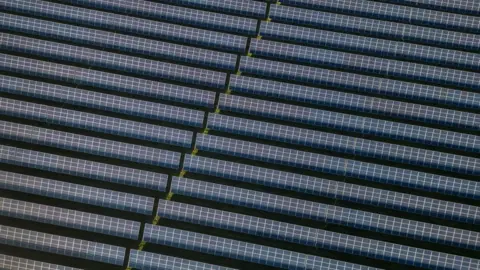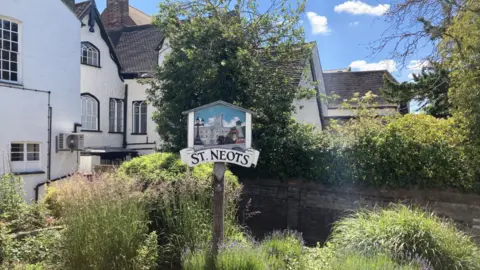Company seeks views on massive new solar farm plan
 Getty Images
Getty ImagesPeople are being asked for their views on plans for a major new solar park.
East Park Solar would be built on the Bedfordshire-Cambridgeshire border, near St Neots, and span 776 hectares (1,918 acres), larger than 1,000 football pitches.
Brockwell Storage and Solar, behind the plans, has launched its official consultation survey for residents and stakeholders.
If the proposals are approved, developers say construction would begin in 2027 and take up to three years.
 Emma Howgego/BBC
Emma Howgego/BBCThe panels would be built across sites close to Pertenhall, Little Staughton and Great Staughton.
The company said they would be capable of generating enough energy to power about 108,000 homes, more than the total number in Bedford and St Neots.
Because the scheme is deemed nationally significant, the proposals will be assessed by central government rather than local authority planners.
Brockwell said it aimed to submit its application early next year, with a final decision expected in 2026.
'Detrimental visual impact'
Concerns already raised locally include the scale of the projects, the loss of high- quality farmland and the lasting effect on soil quality after decommissioning, planned for 40 years after construction.
The Stop East Park Energy campaign has raised these issues and more, including the “detrimental visual impact on the open, attractive landscape”.
Brockwell said it understood concerns about the park’s size but that the UK “needs to take urgent action to respond to climate change”.
It said the park would only adversely affect soil quality across six hectares (15 acres) and has promised a minimum of 10% biodiversity net gain.
Documents confirm that plans have changed to avoid the remains of a Roman town near Great Staughton.
The deadline for responses to the survey is 29 October.
